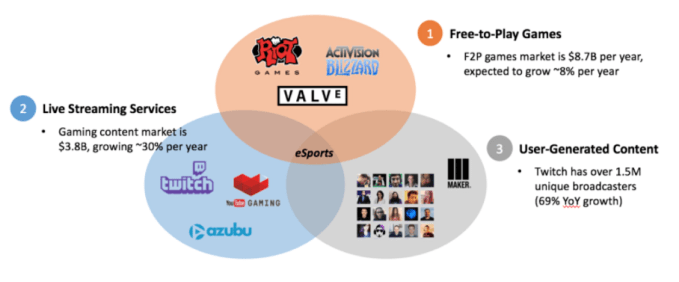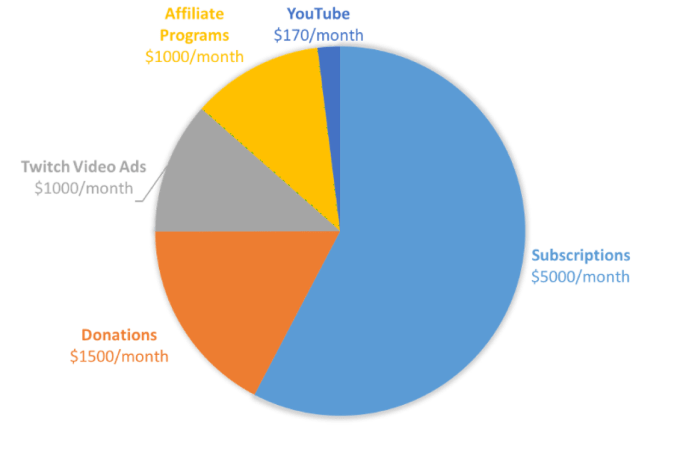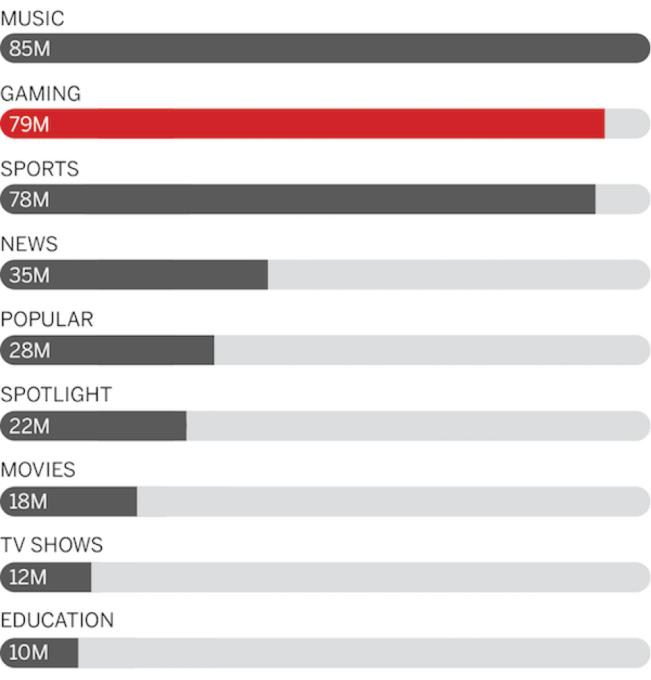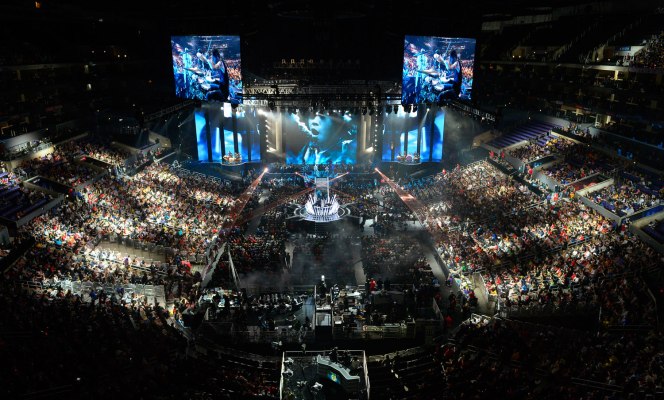The e-sports industry is getting big. Really big. More people watch Twitch than CNN. Riot, Valve, Activision-Blizzard and EA all have e-sports initiatives. The largest tournaments attract tens of millions of viewers and offer multi-million dollar prize pools for the best players in games like League of Legends and Dota 2.
However, the focus on superstar players, marquee tournaments and comparisons to traditional sports misses the mark on one of the most interesting aspects of e-sports. When taking a closer look at the economics of e-sports and streaming, it turns out that it pays much better to be entertaining than good.

Source: Madrona Venture Group
Traditionally, professional e-sports players earned the majority of their income from tournament winnings. Following this model from sports like golf or tennis, players would travel around the world to major tournaments and compete for prize money.
For example, the 400th-highest-earning competitive e-sports player of all time is Spirit, a Korean League of Legends player. He has made $80,000 in 13 tournaments since 2013, including a Top 3 finish at the 2014 League of Legends World Championship.
Today, however, with the popularity of live-streaming services, there are a variety of new revenue models like subscriptions, donations and crowdfunding. These new models are leading streamers to focus more on entertainment and viewer engagement rather than winning prize money.
For example, the 400th-most-popular streamer on Twitch is Destiny. He has made only $2,444 in tournaments since 2011, but he earns more than $100,000 per year on Twitch, primarily from subscriptions ($5,000/month) and donations ($1,500/month). Below is a breakdown of his monthly income, which he shared in an interview with The Daily Dot.

Source: The Daily Dot, Destiny
This model works for e-sports streamers because the cost to “go pro” and begin broadcasting is nearly zero, and streamers can earn meaningful amounts of revenue with only a small audience.
Streamers don’t need to invest in years of practice and coaching or spend millions of dollars on broadcasting infrastructure. Anyone can start streaming at any time, for free. An article about KittyPlaysGames explains how a law student became a professional streamer, with 2,500 subscribers (that’s at least $6,250/month in subscriptions) and more than 50 fans who have sent her donations of more than $1,000.
A career in corporate law would be a step down in income. KittyPlaysGames
Because of subscriptions and direct donations, streamers are not reliant on ads, and they can generate enough revenue to support themselves with a relatively small, but engaged audience.
Destiny, for example, earns $6,500 per month from subscriptions and donations, despite having an average of only 2,000-2,500 concurrent viewers, and KittyPlaysGames, who typically has an audience of 2,000-5,000 concurrent viewers, has said “a career in corporate law would be a step down” in income.
This unique level of access and opportunity in e-sports is incredibly exciting, and we are seeing more and more new companies focus on e-sports entertainment over competition. Check out Jonathan Pan’s great Esports Market Ecosystem Maps for more details.
We are still in the early days of e-sports, but there are many opportunities for companies to grow and define the category. Here are some of the ideas that we are on the lookout for at Madrona:
The next Twitch
Twitch has been a fantastic platform for the gaming community, but it’s unclear if Twitch will win other verticals. Here are the top video categories on YouTube — will people want to watch these activities live, and how will they want to interact with content creators?

Source: ESPN and FiveThirtyEight
Media companies that can grow rapidly on Twitch
ESPN started on cable, BuzzFeed started on Facebook and VICE started on YouTube. Each of these companies mastered their channel to grow rapidly, then expanded to other channels. Which media companies will grow up on Twitch (or other streaming platforms)?
Tools for streamers
Streaming is often a 50+ hour per week, full-time job; streamers need to find creative ways to engage and monetize their audience. Madrona’s latest investment, Matcherino, falls into this category. They help streamers engage their audiences when they are not streaming and utilize crowdfunding as a mechanic to help fans support their favorite streamers.
